By Vincent, France
Table of Contents
The first step: leaving home
About ten years ago, I left my home country to travel, to discover what the world was. I was in my early twenties and had the opportunity to join an old friend who was doing an Erasmus exchange in Mexico, as part of his sociology studies.
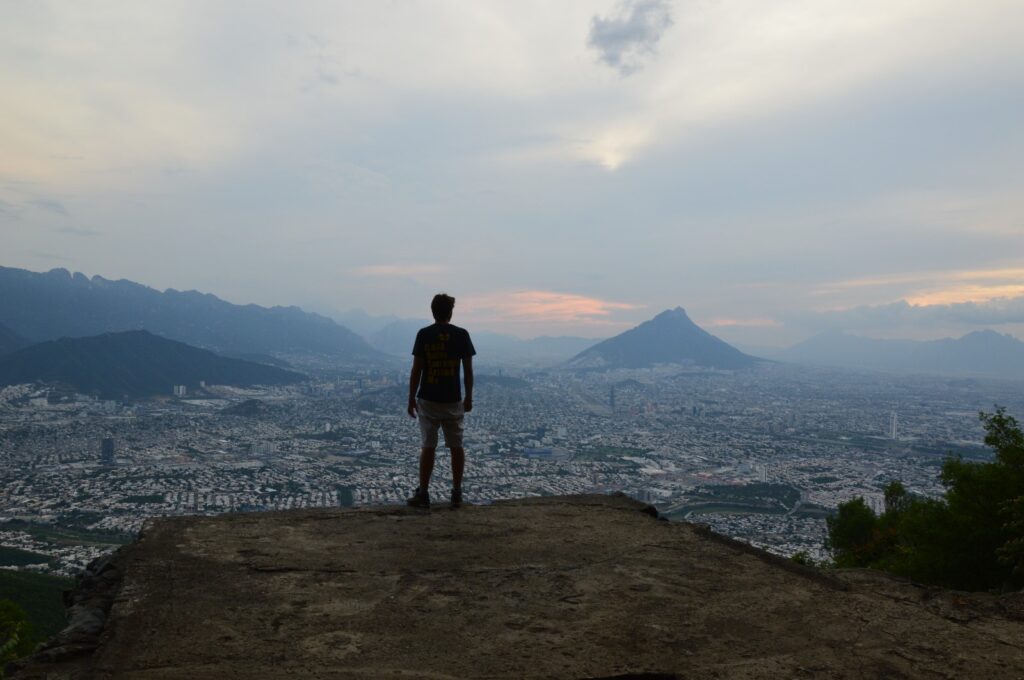
After a few days in this country, immersed in a completely different culture, I started to realise how much my vision of life had been conditioned by the place I was coming from.
At that time, I didn’t know it yet, but that was the beginning of my journey into Yoga. Yoga in the true sense of Yoga. Yoga as a way, a path.
Atha-yoga-anushasanam
This is the path of Yoga.
A way to transcend the limitations of the mind.
Yogas-chitta-vritti-nirodhah
Yoga is the mastering of the mind’s tendencies.
The second step: discovering the sacred
Mexico is one of those countries where spirituality seems constantly in the air. It’s something difficult to describe, but there is a fragrance of magic, a fragrance of the sacred, a fragrance of… indescribable.
As I immersed myself in this culture, I began visiting temples from ancient Mexican civilisations. I was astonished by the beauty of those places, their serenity, and their sense of perfection. This triggered my curiosity to learn more about their philosophy, or at least what remains of it today.
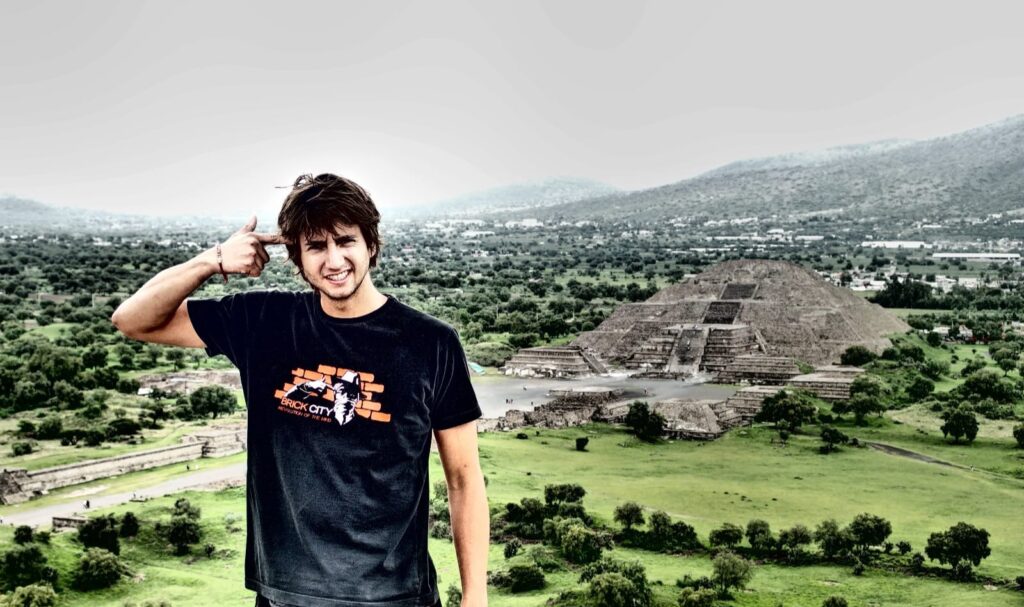
Teotihuacan, Mexico, May 2014 – The beginning of a mind’s revolution
An understanding began to sprout in me: as human beings, we live in nature, and this nature is the playground of a conscious entity, which is me. And there is the possibility of establishing perfect harmony between this and that.
Tadah-drashtuh-svarupe-avasthanam
Then the Seer abides in its own true nature.
At that time, I didn’t know it yet, but that was the second step of my journey into Yoga.
The leap: the encounter
Years went by. I continued to travel, went back home, traveled again, did all kinds of things, found love, grew up, made mistakes… and through it all, my connection with spirituality kept growing.
Through the places I visited, the people I met, and the experiences I had, I was touched again and again by different approaches and traditions. And somehow, without really planning it, the woman who would become my wife and I, signed up for a three-month Yoga course in Thailand.
At that time, I thought I was making a real jump into Yoga.
The course was good. At the end of the three months, I was happy, I thought I understood what Yoga was about. I was ready to continue. Continue to travel, to go back home, to travel again, to do all kinds of things… But something happened.
The course had just finished a few days earlier. And, like an assiduous student, I was practicing my morning routine before going for a good coffee. The day before, we heard about a two-day workshop happening in the same studio where we were staying, but Emily and I agreed not to attend.
What was the point of a two-day workshop after completing a three-month course?
But somehow, that morning, a voice kept knocking in my head:
“Vince, you have to go to this workshop.”
What harm could it do?
So we decided to go.
At that time, I didn’t know it, but I was making a real jump in Yoga.
The workshop was led by an Indian Yogi, the one who would become Sage Vigo.
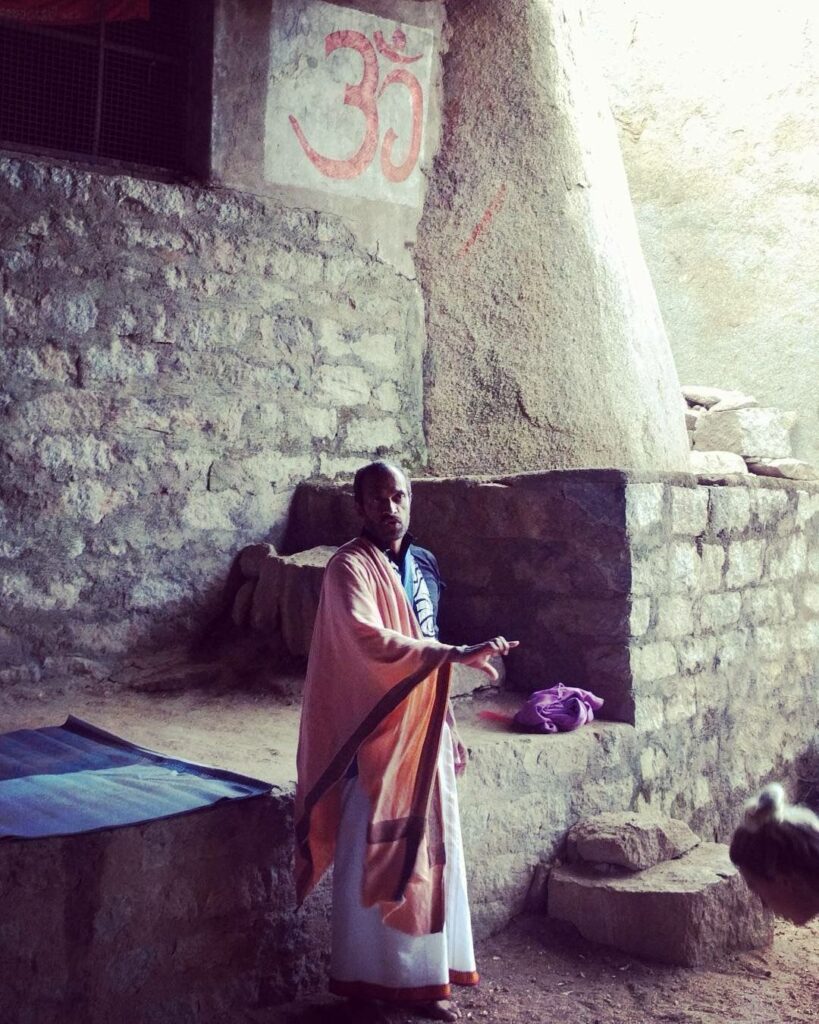
Boom.
I understood that I didn’t understand yet
Vritti-sarupyam-itaratra
Otherwise there is identification with the tendencies.
The real jump: India
Now there were no other possibilities, we had to go to India and dig further.
At that time, Sage Vigo was just beginning to establish a Yoga school in Mysore. We didn’t know it when we booked our tickets, but we would arrive just before a 200-hour TTC, followed by a 300-hour TTC.
And so, we landed in India.
I was far away from home, far from everything I knew, yet I felt a sense of déjà vu…
As in Mexico, there was that same subtle presence, that same invisible fragrance spread all around.
India is “one of those countries where spirituality seems constantly in the air. It’s something difficult to describe, but there is a fragrance of magic, a fragrance of the sacred, a fragrance of… indescribable.”
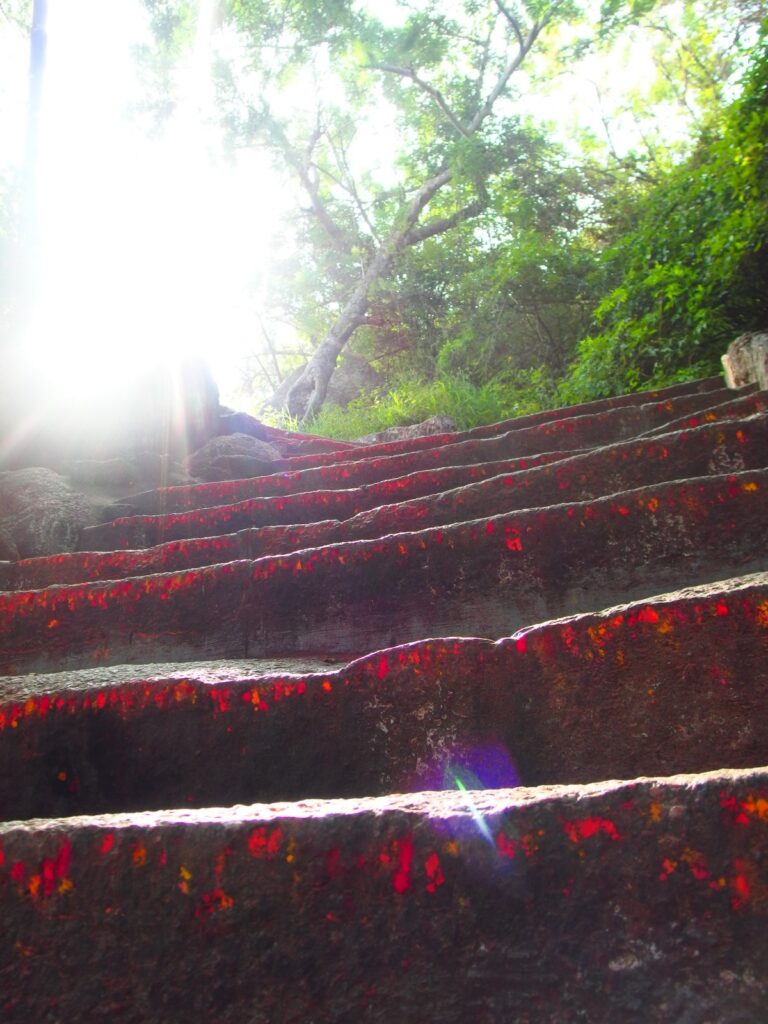
Mysore, India, November 2017 – The steps of Chamundi hill, my first step in Yoga
The course started.
At that time, I knew it, I was jumping in Yoga.
Through the teaching of Asana, Pranayama, meditation, chanting and philosophy classes, Sage Vigo was unfolding the immensity of Yoga. And little by little, he began to introduce us to the Yoga Sutras of Patanjali.
For me, this was the beginning of a whole new universe: the universe of the Yoga Sutras of Patanjali
The methodology: the essence of Sanskrit
I was astonished by the depth of Sage Vigo’s classes, their serenity, their precision, their sense of perfection. This awakened my curiosity to learn more about this ancient science, and about the gift that Patanjali left us more than two thousand years ago: the Yoga Sutras, written in Sanskrit, and still available today.
My journey in spirituality had started some years ago, but now I was presented to an organised methodology.
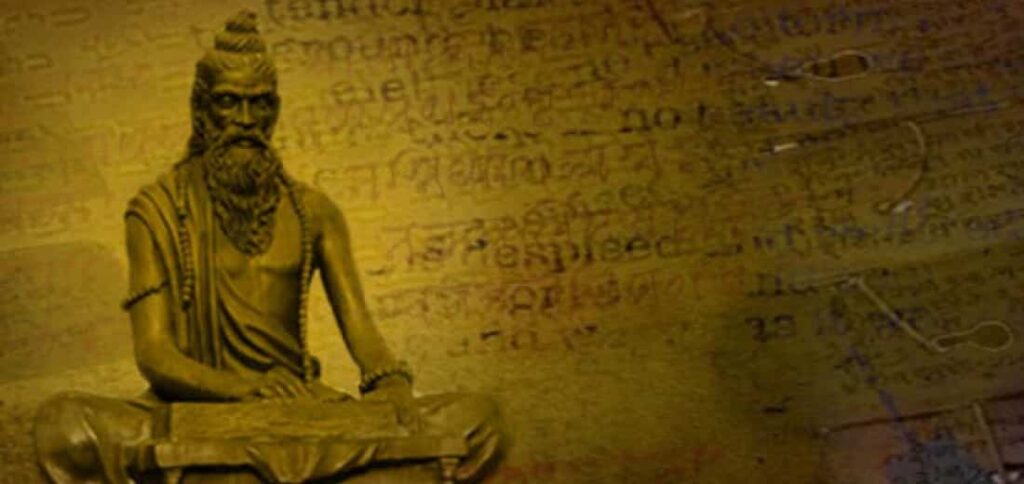
In this methodology, I have to recognise my limitations:
Vrittayah-panchatayah-klishtah-aklishtah
Those mind tendencies based duality are of five types
And for this to be overcome, Patanjali gives us two pillars: Abhyasa, the practice & Vairagya, non-attachment.
Abhyasa-vairagyabhyam-tan-nirodhah
Through practice and non-attachment, the tendencies are dissolved.
This is the beauty of the Yoga Sutras. In a very concise way, Patanjali gives us a path to evolve as human beings until the state of complete Self-realisation.
To explore the depth of this methodology, we first need to understand something essential: the specificity of Sanskrit. Unlike most languages, Sanskrit did not arise only for the sake of communication. It is a refined human expression, aligned with the very nature of existence. (I wish I could develop that in a blog of its own, let’s see if that chance comes.
As human beings, we live in nature, and this nature is the playground of a conscious entity, which is me. And there is the possibility of establishing perfect harmony between this and that.
All the realisations I had glimpsed before were now finding a foundation in a practical approach. Yoga is not a belief system, not something based on imagination, it is an experiential journey, a continuous path of direct experience with what is. The Yoga Sutras of Patanjali are perhaps the purest exposition of spirituality ever written. There is no illusion, no dogma, no ideology in them. Only direct guidance, pointing again and again to the truth.
Abhyasa: practice as natural expression
Yoga literally means union, but as we saw in the beginning, it also means the way, the path that leads to complete Self-realisation, Moksha. And the quality of our evolution depends only on our involvement in practice.
And that’s why everything starts with Abhyasa.
Abhyasa does not mean “practice” in the ordinary sense. It is not just a routine or a technique that you apply. Abhyasa means that which becomes your natural expression. It is the way you live life itself.
Tatra sthitau yatno’bhyasah
Abhyasa is the effort to remain there, steadily.
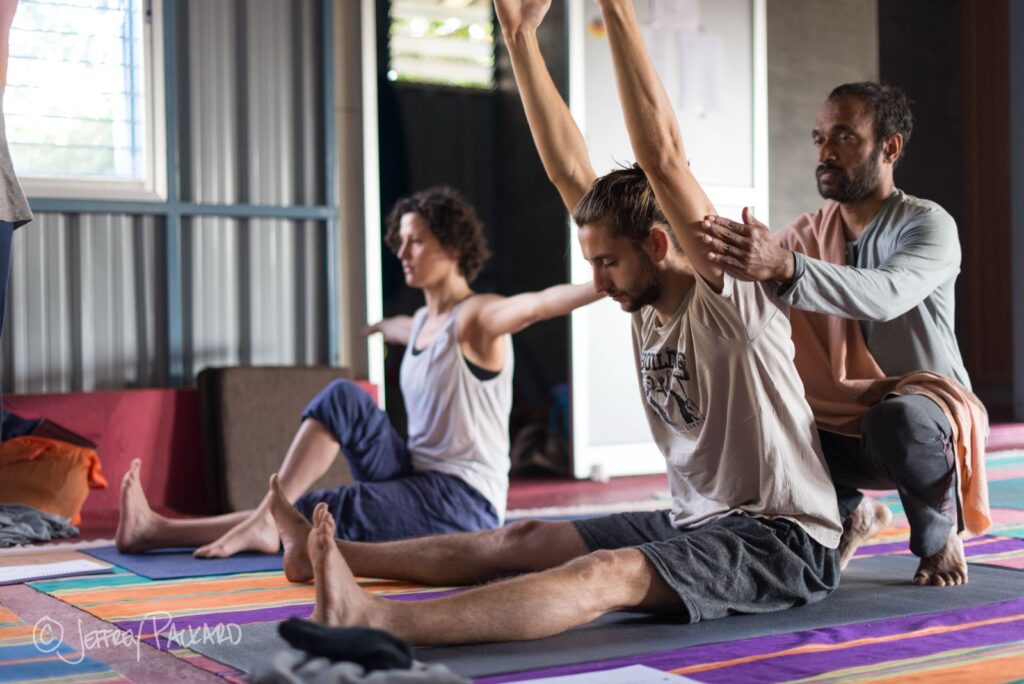
“Tatra” means “this is.” Like a definition in a dictionary: clear, objective, without opinion. Simply a fact. And this is the background of the whole Yoga Sutra.
Throughout the Sutras, Patanjali uses words from an open and non-conclusive background. The same word used in a different way could be conclusive, but Patanjali knows the art of using words. Words are in essence finite, conclusive, but he uses them as indicators towards the infinite.
The whole Yoga Sutra is a continuous addition of words, without any conclusion in the addition. It is a way to add finite things in the direction of infiniteness. Words are just an indication, like a finger pointing to the moon. The finger is not the moon, the word is not the thing. Only the one who looks beyond the finger, beyond the word, will see what was shown, what was meant.
Patanjali is pointing to the Self. We can’t just read the Sutras with the mind, but we have to approach them with a fully open heart.
Each Sutra is an opening, a call to expand the borders of what we call “understanding.” It is a life journey, a total commitment.
Vairagya: freedom from attachment
And that is why Vairagya comes with Abhyasa. From the very beginning, Patanjali removes the possibility of attaching a conclusion to his statements. Practice, yes: deepen, evolve, understand and grow through experience, that is Abhyasa. But never conclude, never cling. That is Vairagya.
Vairagya is the ability to remain in a virgin state of mind. Whatever you practise should not build rigidity in you, but expand the purity of your being.

Ancient Truths: A new life in a peaceful world
Because the tendency of the mind is always to build borders. Whatever you do, whatever you believe, the mind wants to make it into an identity, a possession. You become the owner of it.
For example, you become vegetarian. First, it is a practice. But soon, it turns into an identity: “I am a vegetarian”. From there, judgment comes: those who are like me are “right,” those who are not, I reject. A practice that could have been liberating becomes a cage.
This is exactly what Vairagya prevents.
Drishta-anushravika-vishaya-vitrishnasya vashikara-samjna vairagyam
Vairagya is the awareness over desire for things experienced.
Vairagya is the deep understanding that nothing can be possessed. At any time, I can lose everything, because what is essential can never be lost.
It is freedom from all identification, all attachment, all limitation, all form. Transformation in the truest sense: trans-form, beyond form.
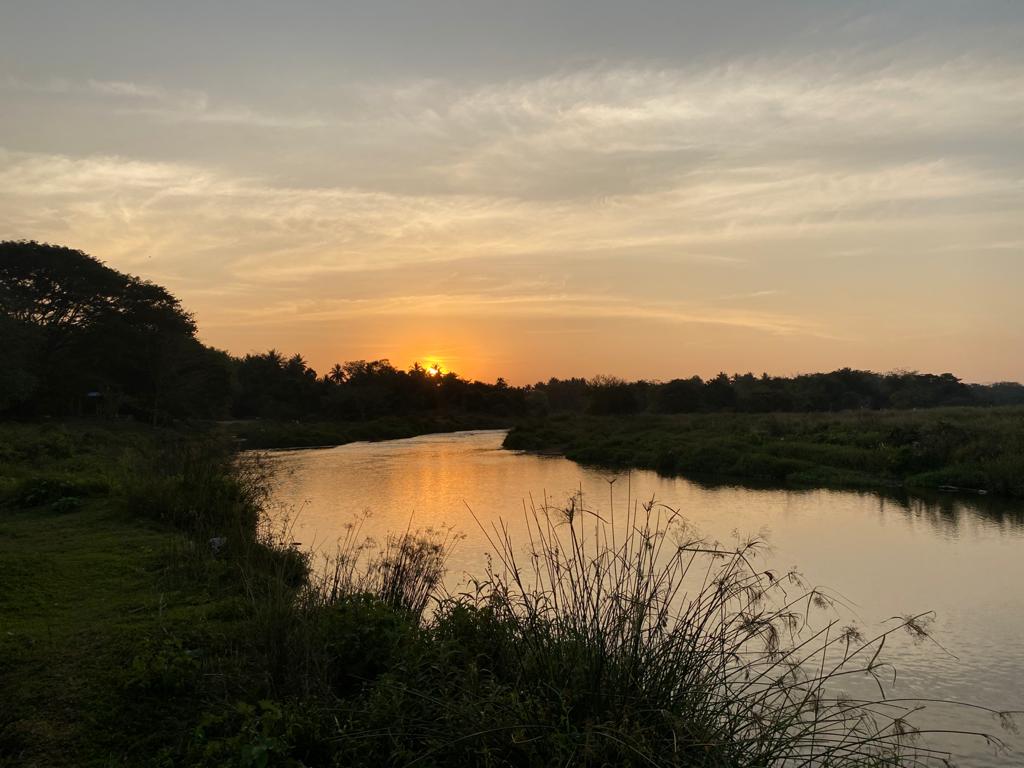
Sunset at Yoga Gita Ashram Srirangapatna
Just the beginning!
As human beings, we live in nature, and this nature is the playground of a conscious entity, which is me. And there is the possibility of establishing perfect harmony between this and that.
Abhyasa is the alignment with nature.
Vairagya is the alignment with consciousness.
In this life, we experience the Self (consciousness) in this world, on this planet, in this body (nature).
And the most important key to understand life is this:
Do not confuse the two. Do not mix the seen with the seer.
That will be the beginning of the second chapter, Sadhana pada !
In these lines, I hope I have conveyed how the Yoga Sutras are not just philosophy, but a living path of transformation. They serve as a map, guiding us from confusion to clarity, from fragmentation to oneness. And what a gift it is to be able to live these teachings in theYoga Gita Ashram, where they unfold in the most practical and transformative way… see you soon !
About the author
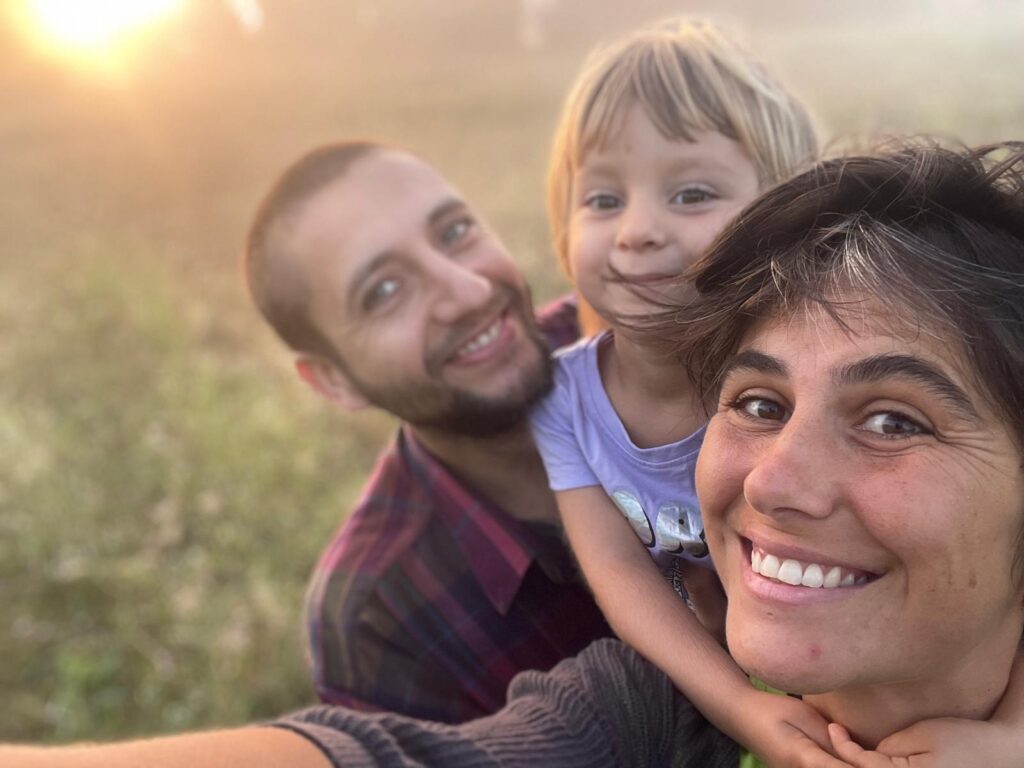
Vince’s journey into Yoga began in 2017. As you saw in this blog, shortly after stepping onto this path, he met Sage ViGo. This encounter planted the seed of an inner pull to continue this journey in India.
Since then, Vincent and his wife Emily have made India their home, fully dedicating themselves to the study and practice of Yoga. Along the way, they’ve had the joy of welcoming their daughter, Luz. The little family stays now at the Yoga Gita Ashram in Srirangapatna, where they explore how Yoga can be lived, not just in theory, but in the practical reality of day-to-day life.
For more information, you can visit the Yoga Gita website or follow on the social media platforms: Facebook, Instagram and YouTube.





1 thought on “A journey into Patanjali’s Yoga Sutra: Getting Exposed to an Organised Methodology to Know Thyself”
Thanks Vince! For sharing these words and a part of this beautiful path of life together ❤️